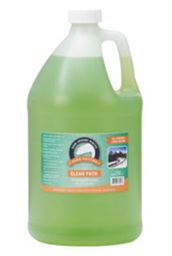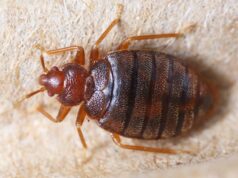NATIONAL REPORT—With winter just a few months away, there is no better time to begin planning for the treatment of the ice that comes with it. While chloride products have been the “go to” ice treatment for years, numerous more eco-friendly products are gaining in popularity. Ed Brookmyer, President of Bare Ground Solutions, says there has been a shift because of environmental concerns—with no compromise on liability and safety.
One needs to look no farther than any chloride product to find negative environmental impacts. According to the EPA, chloride products can contaminate drinking water, kill or endanger wildlife, increase soil erosion, and damage private and public property. “A chloride product such as rock salt will negatively impact plant growth on the sides of the treated areas,” Brookmyer says. Chloride products will also harm wildlife that eat the salt and salty roads attract animals like deer and moose (who love licking up the salt), increasing the probability of accidents.
Chloride salt is not used by the soil, according to another industry expert. Ninety-nine percent of every pound of ice melt travels to water—ground water or to the city waste system. Overuse is chronic. Once salt gets in, it does not dilute.
From an operations standpoint, salt solutions will often leave a white mess in entry areas, adding to labor time and associated costs.
Safe for the Environment

Bare Ground Solutions’ Clear Way Non-Chloride Potassium Acetate and Potassium Formate liquid deicer is a non-chloride/non-conductive deicer. It is non-toxic, non-polluting, non-corrosive, and safe around plants. It significantly reduces the freezing point of water. Bare Ground also offers Sodium Formate non-chloride granular deicer too.
Safe for Pets
In areas with snow and ice, millions of travelers visit hotels with their pets. Directly targeting businesses catering to pet owners, Bare Ground Solutions offers Paw Pleaser, a non-salt deicer. Paw Pleaser liquid can be sprayed during or after a snow or ice event using any conventional sprayer with an adjustable nozzle. Paw Pleaser is also available in pellet form.
Bare Ground Solutions’ Brookmyer says his company also offers SolarMelts Activated Ice Melt. It is solar activated, absorbing sunlight and converting solar energy into ice- and snow-melting heat. It works over several days and re-application is only needed after new snowfall.
A Cost-Effective Solution
Liquid products are cheaper to apply than granular chloride salt but can be used in tandem with granular products around a property. For example, liquid product described above can be used within 100 feet of the entranceway.
Liquid products should not be used when there are rain conditions as they will just be washed away. One should remember that liquid will always go to the low point of any property.
The Impact of Temperature
While ice melt is just ice melt to many users who don’t know the differences between products, effective ice prevention and treatment is more complicated. Removing ice at 30 degrees is much different than at 5 degrees. Product labels often don’t explain how differently to use the products at different temperatures.
Be sure to work with your supplier on best application practices, as effectiveness temperatures can range from as low as 10F to as low as -58F.
Glenn Hasek can be reached at greenlodgingnews@gmail.com.






